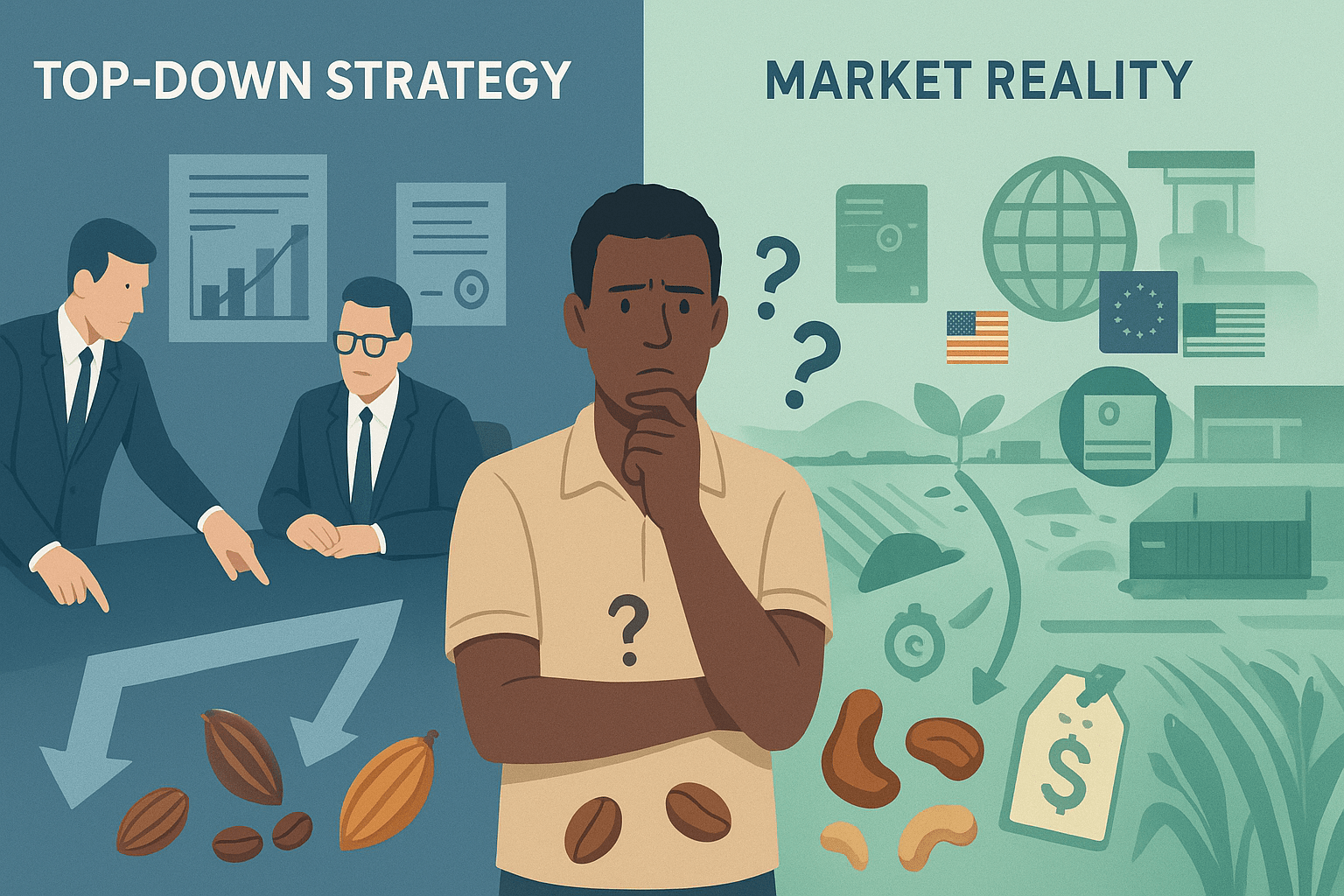In the world of export agriculture, particularly in commodity-based trade, business success is often thought to rest on structured plans and disciplined execution. For many agricultural exporters and cooperatives, this translates into closely following government policies, donor-funded programs, or leadership directives. However, such top-down strategies often neglect a critical truth: real market value is determined by the buyer, not the producer.
Commodities: Controlled by Buyer Perception
Agricultural export products like cocoa, coffee, cashew, shea, or sesame are typically classified as commodities a term that often implies that they are interchangeable and priced primarily by global supply and demand. But in practice, this is not entirely true.
What is considered “premium” or “acceptable” is highly dependent on buyer appreciation, not just intrinsic quality. International buyers, often in Europe, Asia, or North America, define the standards moisture content, appearance, aroma, packaging, certifications, sustainability claims and impose them strictly on producers.
The paradox here is stark: the producers who grow the crops have the least say in how those crops are valued.
The Problem with a “Boss-First” Business Strategy
In many export agriculture ventures, especially those funded or supported by NGOs, development agencies, or government ministries, business strategy often means “follow the instruction” whether from a program director, export board, or cooperative manager.
But the agricultural export market doesn’t care about internal instructions. It responds to:
- Changing consumer preferences
- Shifting import regulations
- Sustainability and traceability demands
- Currency fluctuations and trade policies
So, if your strategy is to just “follow orders,” then when do you respond to the market? If no one is empowered to adapt or challenge the boss’s instructions, market shifts go unanswered and the entire value chain suffers.
Producers Are Disempowered But Hold the Key
Ironically, the farmer or local processor the person closest to the product is often the most disempowered. Yet they are also the only ones who can:
- Improve quality at the source
- Adjust harvesting and post-harvest practices
- Innovate in sustainable or organic farming
- Provide the story that adds value in niche markets
But with no real-time feedback loop from the buyer, and no flexibility to adjust based on market signals, producers are left producing what they’re told, not what the market wants.
The Way Forward: Strategy That Listens
To unlock real value in export agriculture, businesses must shift from command-and-control to market-responsive strategy. This involves:
1. Integrating Market Intelligence
Build direct feedback loops from buyers to producers. Regularly share buyer trends and expectations with farming communities.
2. Empowering Producers
Train farmers and cooperatives to understand grading, quality specs, certifications, and price differentiation not just obey instructions.
3. Flexible Business Models
Allow cooperatives and SMEs to experiment and adapt. The ability to pivot based on buyer feedback must be built into the structure.
4. Leadership That Facilitates, Not Commands
Leaders should act as facilitators of market access and enablers of innovation, not dictators of fixed processes.
Conclusion
In export agriculture, strategy must be built around buyer reality, not internal authority. Without that, producers become trapped in cycles of dependency, delivering products that may no longer meet market needs. Business success in this sector demands more than discipline it demands the capacity to listen, respond, and adapt.




